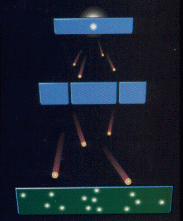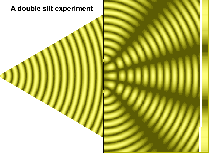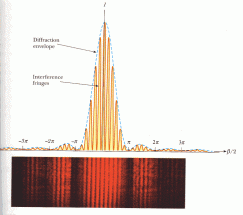Every important race starts with a first step. With some time, we hope to put you in the vanguard of condensed matter physics principally, but physics in general. But before we start running, we think it is better to start with a simple walk.
For the benefit of non-specialists and students, who might not have such an extensive knowledge of physics, we will start reviewing some basic, yet extremely important topics. The first question that might come to your mind could be: Why condensed matter physics? Why should I care? Well, look around you. Almost everything you see is governed, in its most fundamental principles, by the physics of materials. Starting from the patterns you see if oil is mixed with water, to the color of the sky, the melting of water, the functioning of resistors and ultimately your computer, to the existence of more exotic phenomena like superconductivity, superfluidity, exotic phases of matter, or the dreams of sophisticated technology advances like functional quantum computers. You name it! The physics of materials pervade our world and daily lives from head to toes. This is what condensed matter physics is all about. And since most of condensed matter physics is concerned with the quantum mechanics of many body systems, we will be discussing some aspects of quantum mechanics in general, and quantum field theory of materials.
Let us start our walk by taking some time to share a few thougts on quantum measurement. This is one of the most mysterious aspects of quantum mechanics. Quantum Measurement is important for abstract questions of how one goes from quantum to classical behavior in an intrinsically quantum world. It must be better understood and controlled as it is one of the important puzzles to be cracked if the promising and exciting dreams of quantum computation are to be realized.
Many physicists consider the problem of quantum measurement unsolved. We will certainly not solve it in this post, but with the simple and cliched example of the double slit experiment, we will present what we know about decoherence from interaction with a measurement apparatus and present the two main
interpretations of measurement: Copehagen (wave function collapse in this context) or Many worlds interpretations.
First, we plagiarize the textbooks presentation of the double slit experiment and start with a double slitted wall. Far to the left is a particle gun and far to the right is a screen where the particles become stuck and are collected. The gun shoots evenly in all directions.
A) The experiment with classical particles
- If the experiment is run with the upper slit open and the lower slit closed, the distribution of bullets at the screen is
.
- If the experiment is run with the lower slit open and the upper slit closed, the distribution of bullets at the screen is
.
- If the experiment is run with both slits open, the distribution of bullets at the screen is
.
B) The experiment with quantum particles
The two most important difference between quantum and classical mechanics are
- particles or aggregates of particles (that is, matter) behave like waves
- quantum mechanics is a statistical theory in the sense that projections of the square of the quantum system’s wave function
onto a state
,
, represents the probability of measuring the system in state
.
So while quantum evolution is perfectly deterministic, something not completely straightforward happens at “the moment of” measurement. Nonetheless, we can predict accurately the statistical behavior of the system, that is, the probability distribution of the outcomes.
- If the experiment is run with the upper slit open and the lower slit closed, the upper slit acts as a source of waves for the particle which has wavefunction
with space dependece
. This gives a distribution of particles at the screen
.
- If the experiment is run with the lower slit open and the upper slit closed, the lower slit acts as a source of waves for the particle which has wavefunction
with space dependece
. This gives a distribution of particles at the screen
.
- If the experiment is run with both slits open, both slits act as sources of waves for the particle which has wavefunction
with space dependece
. This gives a distribution of particles at the screen
.
Here we see one of the most important differences between quantum and classical mechanics: the wave aspect of matter. This aspect is illustrated by the the wave interference term , which is absent when the experiment is performed with classical particles.
If instead of shooting the particles all at once, they are shot one by one, and after a large number has accumulated at the screen one looks at the distribution, the results do not change. There is still interference. Each particle “interferes” with itself. Actually the wavefunction corresponding to each particle interferes with itself.
You can have a bit of fun with two nice applets found here:
http://www.colorado.edu/physics/2000/applets/twoslitsa.html




Recent Comments